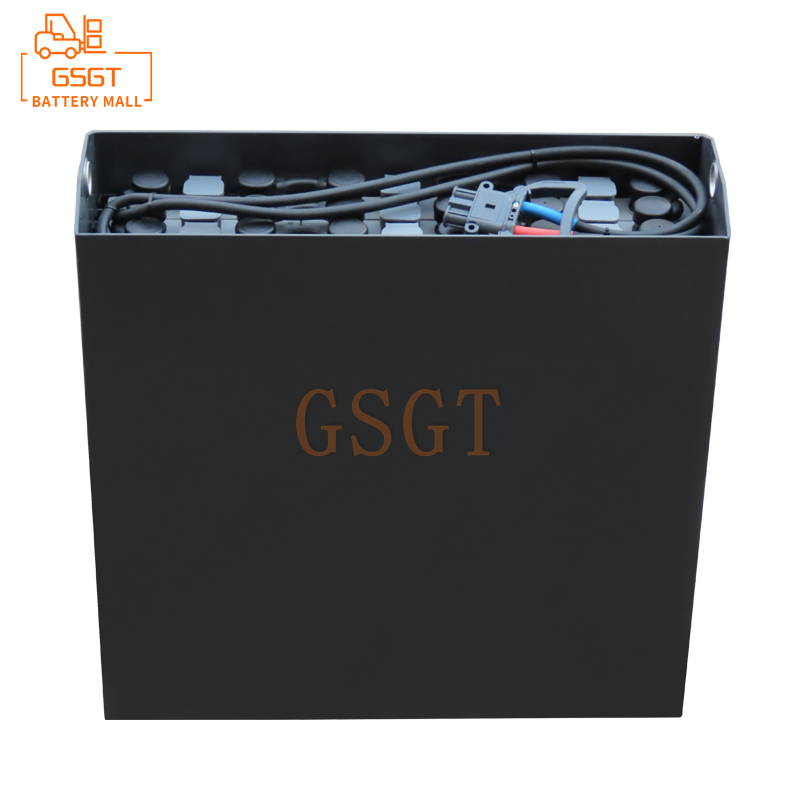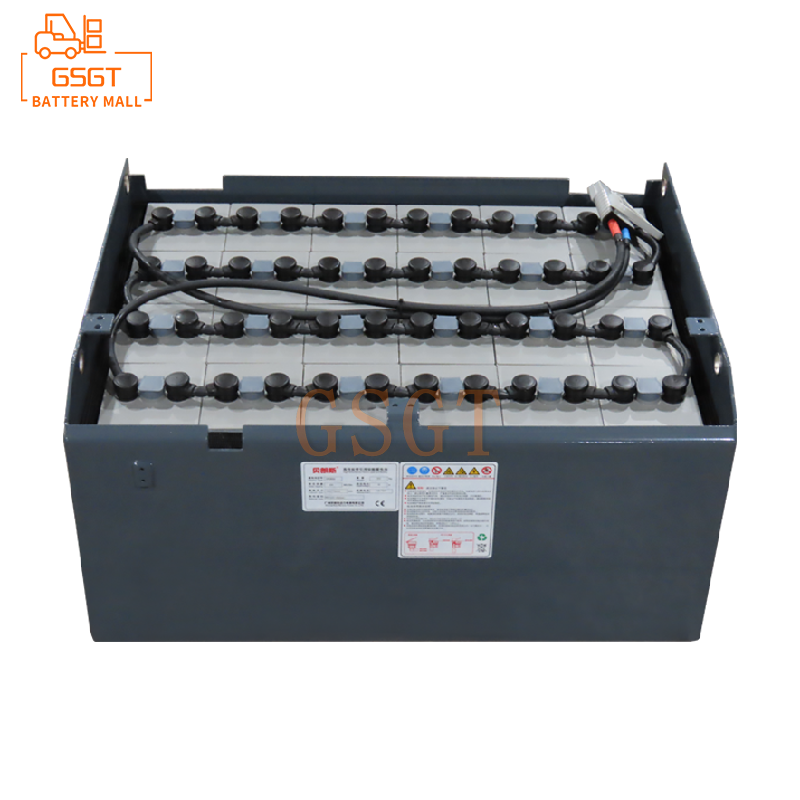Time:2025-07-26 11:45:23
Browse:616
In the logistics and handling process of industrial production, forklifts play an indispensable role. As the power source of forklifts, the lead-acid battery of forklifts has a service life that directly affects the normal operation of forklifts and the operating costs of enterprises. For enterprises, extending the service life of lead-acid batteries in forklifts can effectively reduce equipment maintenance and replacement costs and enhance production efficiency. So, exactly what factors will affect the service life of lead-acid batteries in forklifts? Now let's conduct a detailed analysis for everyone.
The influence of charging operation
Charging operation is one of the key factors affecting the lifespan of lead-acid batteries in forklifts. When many people charge the lead-acid batteries of forklifts, they often do not pay attention to the charging voltage and charging time, which can cause great damage to the batteries.
If the voltage is too high during charging, it will cause the battery to be overcharged. At this point, the water in the electrolyte will be decomposed in large quantities, generating a lot of gas. These gases not only reduce the electrolyte but also corrode the electrode plates, causing damage to them. Over time, the capacity of the battery will drop significantly and its service life will also be shortened accordingly.
The situation of insufficient charging should not be ignored either. When a storage battery is undercharged, the plates inside it will gradually sulfate. The sulfated plates will affect the battery's ability to store electrical energy, resulting in a reduction in battery capacity. Moreover, once this sulfation phenomenon forms, it is very difficult to completely eliminate and will have a long-term impact on the performance of the battery, shortening its service life.
Therefore, when charging the lead-acid battery of a forklift, it is essential to select the appropriate charger in accordance with the battery's specifications and manual, control the charging voltage and time properly, and avoid overcharging and undercharging.
The influence of discharge conditions
The discharge condition also has a significant impact on the service life of lead-acid batteries in forklifts. During the operation of a forklift, the battery is in a state of discharge. However, if the discharge is improper, it will seriously affect its lifespan.
Deep discharge is a common problem. Deep discharge refers to recharging a battery when its power is almost completely drained. Although lead-acid batteries can be discharged, excessive deep discharge will cause the active material on the plates to fall off, thereby reducing the battery's capacity and service life. For instance, if a battery is still in use when its power has dropped to less than 20%, it is considered deep discharge, which can cause significant damage to the battery.
In addition, excessive discharge current can also have adverse effects. If forklifts are frequently started and accelerated under heavy load, it will cause excessive discharge current of the battery. At this time, the chemical reactions inside the battery are too intense, which will cause the plates to heat up, accelerate the corrosion of the plates and the shedding of active substances, and thereby shorten the service life of the battery.
Therefore, when using forklifts, it is necessary to avoid deep discharge as much as possible. When the battery level drops to a certain extent, it should be charged in time. At the same time, when operating a forklift, it should be done smoothly, reducing frequent starts and accelerations under heavy loads to control the discharge current.
The impact of maintenance and upkeep
Whether the maintenance and care of lead-acid batteries in forklifts are in place directly affects their service life. Many enterprises and users often neglect daily maintenance and care, resulting in the premature scrapping of batteries.
Regularly checking the liquid level and density of the electrolyte is an important part of maintenance and care. The electrolyte is the key to the normal operation of a storage battery. If the liquid level is too low, the plates will be exposed to the air, accelerating their oxidation and sulfidation. If the density of the electrolyte is not appropriate, it will affect the charging and discharging performance of the battery. If the electrolyte level is found to be too low, distilled water should be added in time (note that tap water or electrolyte should not be added), and the density of the electrolyte should be adjusted to an appropriate range.
It is also very important to clean the electrodes and terminals. Dust, oil stains and oxides are prone to accumulate on the electrodes and terminals. These substances will increase the contact resistance, affect the conduction of current and cause poor charging and discharging of the battery. Regularly clean the electrodes and terminals with a dry cloth or a cloth dipped in soda water, and apply Vaseline to prevent oxidation and ensure good conductivity.
In addition, it is necessary to check whether the battery casing has any damage, leakage or other conditions. If the casing is damaged and the electrolyte leaks, it will not only corrode the surrounding components but also affect the performance of the battery. At this time, the battery needs to be replaced in a timely manner.
The influence of environmental factors
Environmental factors also have an undeniable impact on the service life of lead-acid batteries in forklifts, among which the influence of temperature is the most significant.
Excessively high temperatures will accelerate the chemical reactions inside the battery, speed up the evaporation of the electrolyte, and also increase the corrosion rate of the plates. In high-temperature environments, the self-discharge phenomenon of the battery will also intensify, leading to a rapid loss of power. For instance, in a workshop with high temperatures during summer, if the battery is exposed to the high-temperature environment for a long time, its service life will be significantly shortened.
However, if the temperature is too low, it will reduce the capacity and charging and discharging performance of the battery. Low temperatures will increase the viscosity of the electrolyte, slow down the ion diffusion rate, resulting in a decrease in the output power of the battery and making it difficult to fully charge it during charging. Long-term use in a low-temperature environment will reduce the actual capacity of the battery and affect its service life.
Therefore, it is necessary to place the lead-acid battery of the forklift in an environment with a suitable temperature as much as possible. Generally speaking, around 25℃ is a relatively appropriate temperature. In summer, it is necessary to pay attention to ventilation and cooling to avoid the battery being in a high-temperature environment. In winter, it is necessary to take good warming measures to reduce the impact of low temperatures on the battery.
Frequently Asked Questions
How to charge the lead-acid battery of a forklift correctly to extend its lifespan?
To charge the lead-acid battery of a forklift correctly, the first step is to select a charger that matches the battery's specifications and ensure that the charging voltage and current meet the requirements. When charging, first connect the charger to the battery, then turn on the power. Do not disconnect the connection during the charging process. The charging time should be well controlled. Once the battery is fully charged (the charger shows full), the power supply should be cut off in time to avoid overcharging. In addition, the charging environment should be well-ventilated. Avoid charging in a confined space to prevent the accumulation of gases and potential dangers.
What should be noted when using lead-acid batteries for forklifts in different temperature environments?
When used in high-temperature environments, it is necessary to avoid prolonged exposure of the battery to direct sunlight or keeping it in a high-temperature workshop. Regularly check the electrolyte level and add distilled water in a timely manner, as high temperatures will accelerate the evaporation of the electrolyte. At the same time, shorten the charging time and prevent overcharging. In low-temperature environments, the battery can be preheated before use. For instance, the forklift can be parked in a warm room for a period of time to enhance the battery's activity. When charging, make sure the charging environment temperature is not lower than 5℃; otherwise, it will affect the charging effect. In addition, the capacity of the battery will decrease at low temperatures. It is necessary to appropriately shorten the single usage time and charge it in time.
In conclusion, the service life of forklift lead-acid batteries is influenced by multiple factors such as charging operation, discharge conditions, maintenance and environmental factors. Only by understanding these influencing factors and taking corresponding measures can the service life of forklifts be effectively prolonged, the operating costs of enterprises be reduced, and the operational efficiency of forklifts be improved.

$1060

$3050

$1200

$2610

MESSAGE
Professional And Efficient
Security
Affordable Price
Professional Services